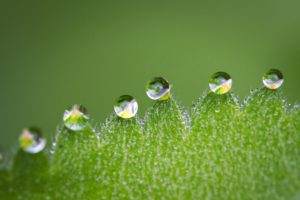A rain garden helps nature help itself by capturing and filtering rain water.
Landscapes bring us some of the simplest but purest pleasures: feeling our bare toes in lush green grass; picking fresh peas from growing gardens; eating blueberries straight from the bush. Our backyards give us the long summer nights around a fire or those lazy days of yore where we would watch the clouds go by.
Sun and rain work together (with us!) to build these private Edens, but sometimes grass and gardens aren’t enough to capture the runoff rain that is increasingly overflowing town drainage systems and bringing pollutants into the water supply. A rain garden is a way to trap those pollutants deep in the soil where they will break down over time. Specifically designed for this purpose, rain gardens are constructed to collect the runoff until it can evaporate and be absorbed back into the beautiful cycle of the seasons. What better way to thank Mother Nature for her bounty?


A rain garden works by capturing and holding storm drain runoff in a soil reservoir. Rain collects bits of the chemicals in roofing and paving materials along with the contaminants in the air like smog and smoke. When that rain ends up in the drainage system, those traces of chemicals find their way back into the drinking water. A rain garden traps the pollutants in the soil and the earth and plants filter them out of the water cycle. This process is called bioretention.
Rain gardens are sometimes mistakenly referred to as “wetlands.” Rain gardens do indeed get and stay wet for a few days, but they are different than wetlands. Wetlands are ecosystems that are permanently or seasonally flooded and support vegetation that has adapted to water-logged, oxygen-depleted soils. Rain gardens contain different plants and soils and are designed to hold water for a few days as the water is absorbed and evaporated.
One rain garden over the course of a year can filter out many thousands of gallons worth of water. That makes a real difference. Many communities have rain garden task forces to spread the word about the benefits and will assist residents in setting up their own. These groups, often comprised of hobbyists and neighbors, have information about the best plants and soils to use in their particular region. Contact your local township offices for more information or check out Groundwater.org for tips about making your own rain garden.